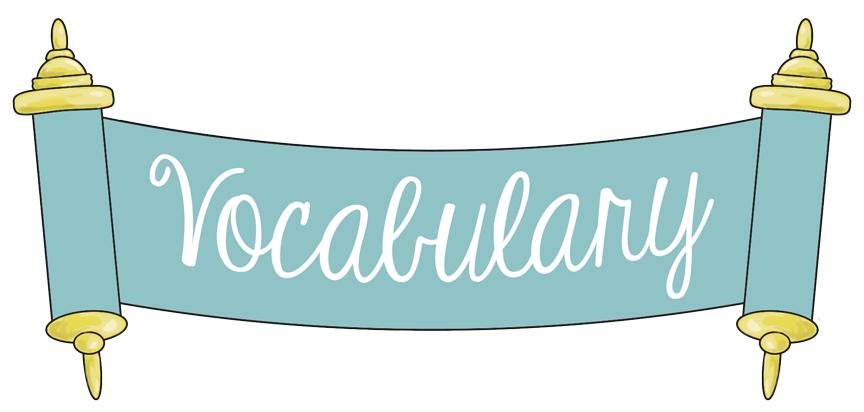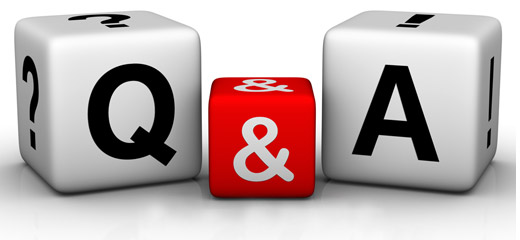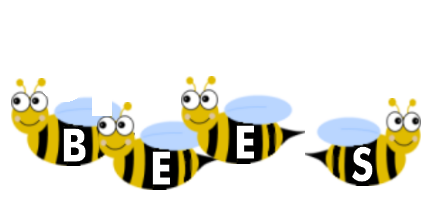Words every teacher must know
blend (vb) — to draw individual sounds together to pronounce a word, e.g. s-n-a-p, blended together, reads snap
cluster — two (or three) letters making two (or three) sounds, e.g. the first three letters of 'straight' are a consonant cluster
digraph — two letters making one sound, e.g. sh, ch, th, ph.
vowel digraphs comprise of two vowels which, together, make one sound, e.g. ai, oo, ow
split digraph — two letters, split, making one sound, e.g. a-e as in make or i-e in site
grapheme — a letter or a group of letters representing one sound, e.g. sh, ch, igh, ough (as in 'though')
grapheme-phoneme correspondence (GPC) — the relationship between sounds and the letters which represent those sounds; also known as 'letter-sound correspondences'
mnemonic — a device for memorising and recalling something, such as a snake shaped like the letter 'S'
phoneme — the smallest single identifiable sound, e.g. the letters 'sh' represent just one sound, but 'sp' represents two (/s/ and /p/)
segment (vb) — to split up a word into its individual phonemes in order to spell it, e.g. the word 'cat' has three phonemes: /c/, /a/, /t/
VC, CVC, CCVC — the abbreviations for vowel-consonant, consonant-vowel-consonant, consonant-consonant-vowel-consonant, which are used to describe the order of letters in words, e.g. am, ham, slam.
http://www.literacytrust.org.uk/resources/practical_resources_info/1032_phonics_glossary
21st Century Teachers
"If we teach today's students as we taught yesterday's, we rob them of tomorrow" John Dewey
Sunday, November 8, 2015
Saturday, November 7, 2015
Presenting new vocabulary
Further techniques that you may use to introduce new vocabulary include:
Miming
Mime the word to be introduced. For instance, to present sing, pretend you are singing and ask students to guess the meaning of the word.
The choice of technique depends on the type of word or expression. For example, it may be easier to describe an action verb through miming, and not through synonym or definition.
http://www.expresspublishing.co.uk/elt/upstream/newvocab.html
How to Teach Question Structures
Teachers often give students plenty of time to practice answering questions without dedicating sufficient practice time to asking them. For example, Crisscross is a very simple warm up activity where students answer questions such as “How’s the weather?” but after nearly a year of doing this activity, students may struggle to come up with the correct question for the answer “It’s sunny!” Students can become accustomed to hearing key words in questions, in this case weather, and answering correctly without paying any attention to the question’s structure.
Here are some ideas to help students focus on this more.
So, How Do I Teach Question Structures?
- 1Introduce Questions and Answers Together
During the introduction of new materials, you can ask the target question when trying to elicit vocabulary. This way, students will hear it while they are focusing on the structure of the answer and after practicing the target answer you can go back and do some pronunciation practice with the question too. Question and answer structures are normally introduced together because for example “How’s the weather?” and “It’s ~.” are a pair and learning one without the other is not very beneficial. - 2Practice Them Together, Too
Practice activities should also include both structures. For speaking practice this is easy because interview activities and model dialogues will certainly include both. Written exercises usually make students focus on answering the questions and not on the questions themselves. For structures where students have to compose their own responses such as “What’s your favorite sport?” it makes sense that students would be more concerned with what they should say in response. On quizzes, exams, and in real life however, students are going to need to be able to ask as well as answer questions so include some activities that draw attention to a question’s word order. You can do this by adding a section of answers where students have to write the question for each answer. If this is too challenging you can have students match questions with answers or, better yet, fill in blanks within the question. These exercises will help students practice question structures more extensively. - 3Production Stage
During production exercises, questions are usually provided so that students have some guidelines or organization for their activities. Model dialogues and role-plays can be adapted to give students more practice forming questions. You can also play Fruit Basket by asking the student in the middle to say a question and having everyone who would answer “Yes” change seats. Example questions might be “Do you like blue? Have you eaten sushi? Are you a student?” This can be used for many different question structures and levels. You could play Fruit Basket as a review activity at the end of the first lesson using the answer structure and as a warm up in the next lesson using the question structure. Students may struggle at first but the more familiar they are with asking questions the easier it will be for them to learn new ones. - 4Focus on Question Words
Make questions part of general review material and activities before exams or quizzes by dedicating a section to them. If you have a study guide for students, make sure that students write their answers to questions as well as complete the questions. This will make them more aware of often overlooked words in questions. For “How’s the weather?” students may be tempted to say something similar to “What weather?” as the target question because many questions in beginning and intermediate English lessons start with what and because they recognize the word weather as the word that links it to the answer. When creating blanks in the questions, leave in words such as weather and focus more on who, what, where, when, why, and how as well as words such as your in questions like “What’s your favorite sport?” When conducting review games, you can include a section where students have to give the question for the answer provided. This may be the most challenging section of the game so awarding extra points for correct answers may be appropriate.
While many classes concentrate on having students answer questions, real life does not work this way.
Students are going to have to be able to both ask and answer questions when given the opportunity to speak English outside the classroom so teachers need to devote plenty of time to question related activities. Once your lesson plans start including more of these, students will have better success remembering and using questions.
http://busyteacher.org/4121-how-to-teach-question-structures.html
http://busyteacher.org/4121-how-to-teach-question-structures.html
Learn English Tenses (Lesson 1)
My lovely teachers. Here's the first lesson of English grammar, that I'm going to test you on next Tuesday during our staff meeting.
Study well
All the best
Present Simple vs Present Continuous - Learn English Tenses (Lesson 1)
Spelling Activities
Learning how to recognize and spell words will help your child become a better reader. You can help your child practice reading and spelling short-vowel words. Below are some activities to help make learning fun!
Making Words : Write the following letter combinations on index cards: an, ap, at, ed, en, et, ib, ip, og, op, ug, un. Then, give your child five consonant letter cards—for example, b, c, r, d, l. Ask your child to choose a consonant card and add it to a combination card to make a word.
Sort the Cards : Write short-vowel words on note cards. Ask your child to sort the cards according to the vowel sounds.
Unscramble the Word : Give your child three letters, and ask him or her to unscramble the letters to make a word. Explain that sometimes you can make more than one word with the same three letters. For example, with the letters a, p, and n, your child can make the words pan and nap.
Rhyming Pictures : Make a list of rhyming words that end with an, ap, at, ed, en, et, ib, ip, og, op, ug, un. Ask your child to look in magazines and cut out a picture for a rhyming word. Encourage your child to find at least two rhyming words for each ending vowel-consonant combination.
Beat the Clock : Set a timer and see how many words your child can write down in one minute. Have your child write down as many words as he or she can spell with the following endings: ack, ath, est, ock, ump, and, ing, ick, ock, ish, ent.
Spell the Correct Word : Write a word for your child on a piece of paper that includes letters similar to the ending letters mentioned in Beat the Clock. Then, say a new word and ask your child to change a letter to make the new word. For example, write the word pick and ask your child to make it pack. Below are some more examples to help get you started:
Tips for Reading and Spelling Chart
Play a Guessing Game : To begin, use the word endings ack, and, ath, est, ick, ill, ing, ock, and ump to create words. Write down a blank line for each letter in the word. For example, for a four-letter word, write _ _ _ _. Ask your child to guess letters to create the word. If your child guesses a correct letter, write it on the correct line. If not, make a list of the letters missed. When your child fills in enough letters to guess the word, he or she should tell you the word and the correct spelling. Now use the following beginning blends to create more words: st, cr, fr, sw, cl, dr, pr, sk, sl, pl, gl, br, tr, sp, fl, sh, ch, th, wh. Take turns making up words with your child and guessing the correct letters.
Word Search : Create a word search puzzle for your child (write ten letters across and five down). Include words that have the following vowel combinations: ai, ay, ee, ea, ie, oa, ow. Ask your child to circle the words. If your child needs assistance, say the word aloud, then ask him or her to repeat the word and find it in the puzzle. Below is an example.
Word Search Example
Tic Tac Toe Spelling : Draw a tic tac toe board. Instead of using an X or O to mark a square, create words that end with the following letters: ame, ake, ate, ave, ive, ice, ite, ine, one, ose, ail, eep, each, eat, oat, ain. Have your child write a word in one of the squares, and circle the word so you both know which ones belong to him or her. The first person who gets three in a row is the winner.
Magnetic Spelling : Give your child magnetic letters and ask him or her to spell words with long vowel sounds that end in silent e—for example, rake, kite, hope, mute. Set a timer and see how many words your child can put together in one minute for each vowel combination. Help your child learn how to put letters together to make words. This time, focus on words that have irregular vowel patterns with blends and digraphs. Below are some words to help get you started. Use the activities below to help your child practice spelling and become a better reader.
Irregular Vowel Patterns with Blends and Digraphs
Spelling Concentration : On each of 12 index cards, write one of the following letters or letter combinations: st, b, f, l, ou, c, ar, ird, ork, aw, t, oy. Turn all of the cards face down and play a matching game to find two cards that make a word. When you find a match, remove those cards from the game. Add more cards as you like!
Unscramble the Words : Mix up the letters of the words in the box above, and ask your child to unscramble as many words as he or she can in one minute. Setting a timer can help motivate your child to work more quickly.
Guess the Word : Think of a word, and write down a blank line for each letter. For example, for a four-letter word, write _ _ _ _. Ask your child to guess letters to create the word. If your child guesses a correct letter, write it on the correct line. If not, make a list of the letters missed. When your child fills in enough letters to guess the word, have your child tell you the word and the correct spelling. Take turns making up words with your child and guessing the correct letters.
http://www.jumpstart.com/common/spelling-activities
Subscribe to:
Comments (Atom)








